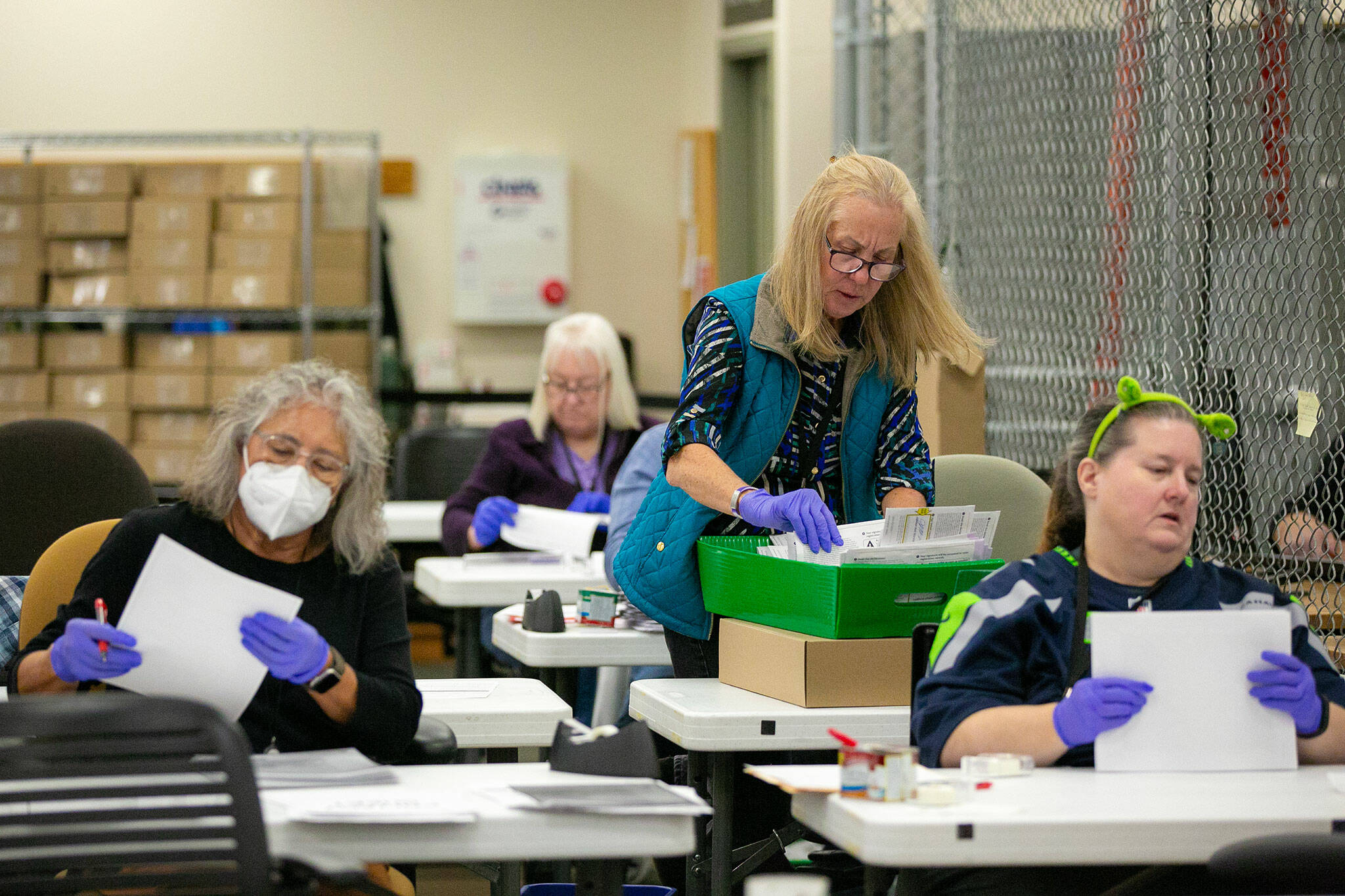EVERETT — When the next president is on the ballot, Snohomish County voters flock to the ballot box.
But when their local city council member or school board director is up for election, only a fraction vote.
Some legislators want to change that.
In 2020, the county saw an overall voter turnout over 85%. This year, only 36% of registered voters returned a ballot.
Results from several races in this year’s election could have flipped, if more voters returned their ballots.
For example, the highly contentious race for sheriff could have ended differently. Susanna Johnson defeated incumbent Adam Fortney by about 6,200 votes. Meanwhile, more than 325,000 Snohomish County voters didn’t return their ballots.
State law requires cities and towns to hold local elections in odd-numbered years, every two years.
For that reason, it’s hard to find an apples-to-apples comparison to even-year elections, but Superior Court judicial candidates were on the ballot countywide in both 2020 and 2023.
Over 370,000 people cast votes in the one Snohomish County judge race in 2020, on the same ballot as the presidential election. But in 2023, fewer than 164,000 people voted in the two local judge races, on ballots shared by the contests for sheriff, county executive, auditor, mayors and dozens of other local positions.
Snohomish County is one of the only jurisdictions in the state to hold elections for county-level positions in odd years. Whatcom County is the other holdout.
A bill introduced this year in the state Senate, sponsored by Sen. Javier Valdez, D-Seattle, would have allowed cities and towns the freedom to switch elections to even-numbered years. Since voters show more interest in even-year presidential elections, putting local elections on the same ballot might yield a higher turnout.
‘Advantages and disadvantages’
Snohomish County Auditor Garth Fell said his office would be prepared to support more even-year elections, if cities decided to make the switch. However, he does see some drawbacks.
The bill sponsored by Valdez only included cities and towns, not school boards, water districts and fire commissions. Fell said if some cities chose to transition to even-year elections, it would place a larger cost burden on its smaller taxing districts, since cities share the costs of conducting elections in odd years.
And if all jurisdictions are included on the ballot, Fell said it could lead to voter fatigue toward the end of a lengthy ballot.
Fell also thinks a long ballot could pose some logistical challenges for his office. Putting every jurisdiction on paper would likely create a multi-page ballot. Fell said it could be challenging to prove his office counted one ballot per voter, when some voters may have multi-page ballots.
It wouldn’t make the results any less accurate, he said.
In Edmonds, Mayor-elect Mike Rosen said he’d like to hear if voters want to transition local elections to even-numbered years before giving his support.
“It’s not a little thing,” he said, “and we should talk about it as a community and fully understand what are the advantages and disadvantages.”
Valdez said, if his bill passes, there will be opportunities for public comment before implementing the change in interested cities.
‘Worst turnouts in state history’
Across the state, Valdez noted dismal turnout rates this year.
“Our election results here in 2023 were not great,” he said. “The last five odd-year elections have been like the worst turnouts in state history.”
Yakima County trailed the rest of the state in voter turnout, with a 25.9% return rate. Columbia County, with a population of about 4,000 people, fared the best, with 56% turnout.
Getting more people to vote in local elections will produce a more representative government, Valdez said.
“Anything we can do to increase participation with our voters is a good thing,” he said.
In Snohomish County, cities differed widely in turnout results.
Everett voters returned just 32% of the total ballots issued.
Gold Bar had the lowest turnout in the county, with 29%.
Index yielded the greatest turnout, with 64% of 130 registered voters participating.
And in second place: Edmonds, with more than 50% of voters returning their ballots in time.
Rosen thinks relatively high turnout in Edmonds is a result of people organizing through schools or other interests.
“I think we have a very engaged citizenry,” he said, “and I think that translates not only because of their higher interest in decisions that impact their lives, but because they are organized around these kinds of issues that have impacts on them or others.”
‘Roll up our sleeves’
Valdez’s legislation stalled in the state Senate’s Rules Committee earlier this year. Other bills took priority over his, he said.
In the next session, Valdez wants to make a bigger push to get the bill through the Legislature, despite the shortened session.
“We’re gonna roll up our sleeves here in 2024,” he said. “I have been working with my colleagues and advocates to see what we can do about getting this out of Rules and on the floor.”
Last year, King County voters approved an initiative to move county-level elected positions to even years, in an effort to boost turnout. Elections for cities and towns within King County will remain in odd-numbered years.
Fell is interested to see how turnout shifts in King County following that change.
“It’s good to have those early adopters that you can learn from,” he said.
The 60-day legislative session begins Jan. 8.
Jenelle Baumbach: 360-352-8623; jenelle.baumbach@heraldnet.com; Twitter: @jenelleclar.
Talk to us
> Give us your news tips.
> Send us a letter to the editor.
> More Herald contact information.



























